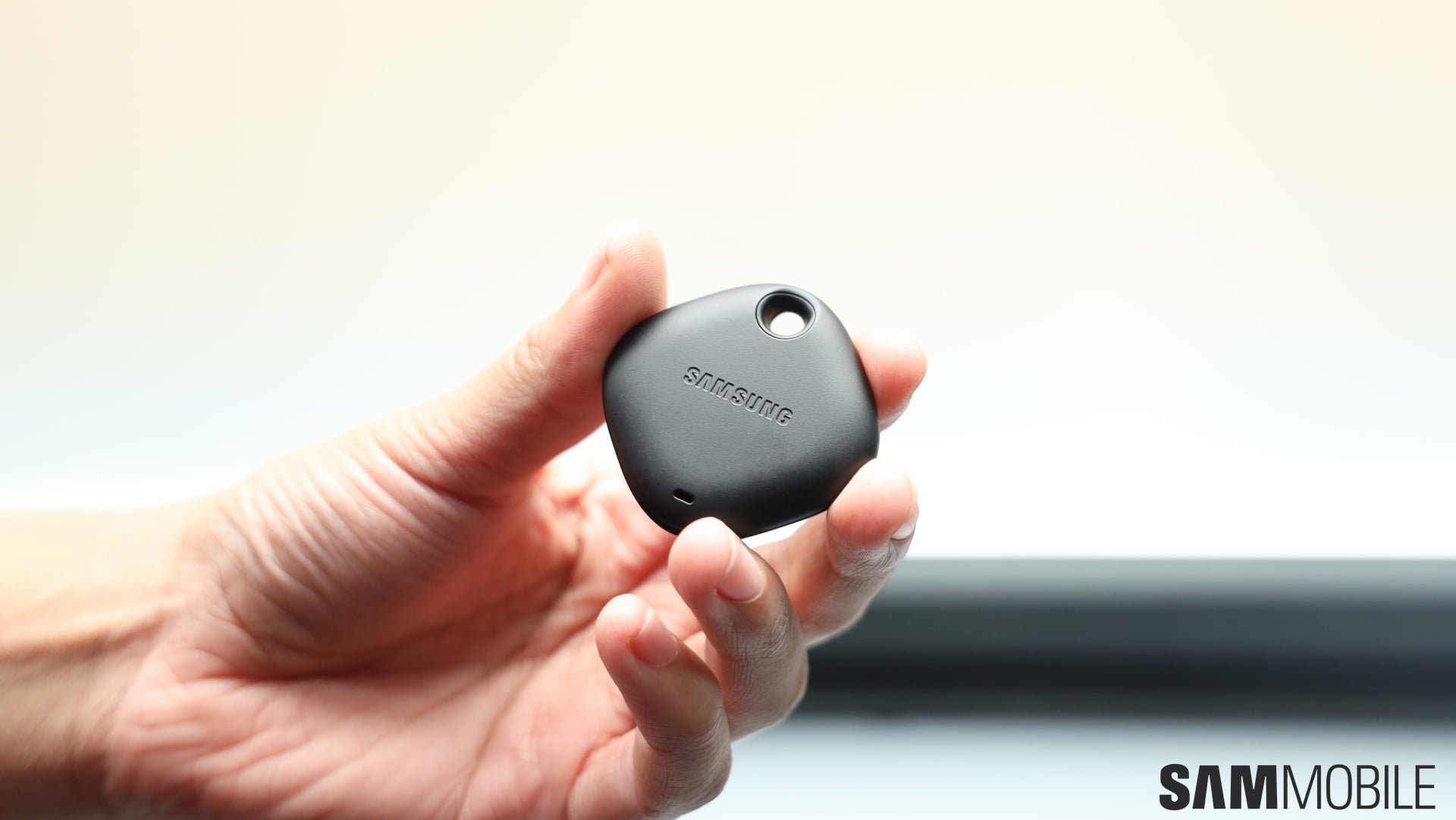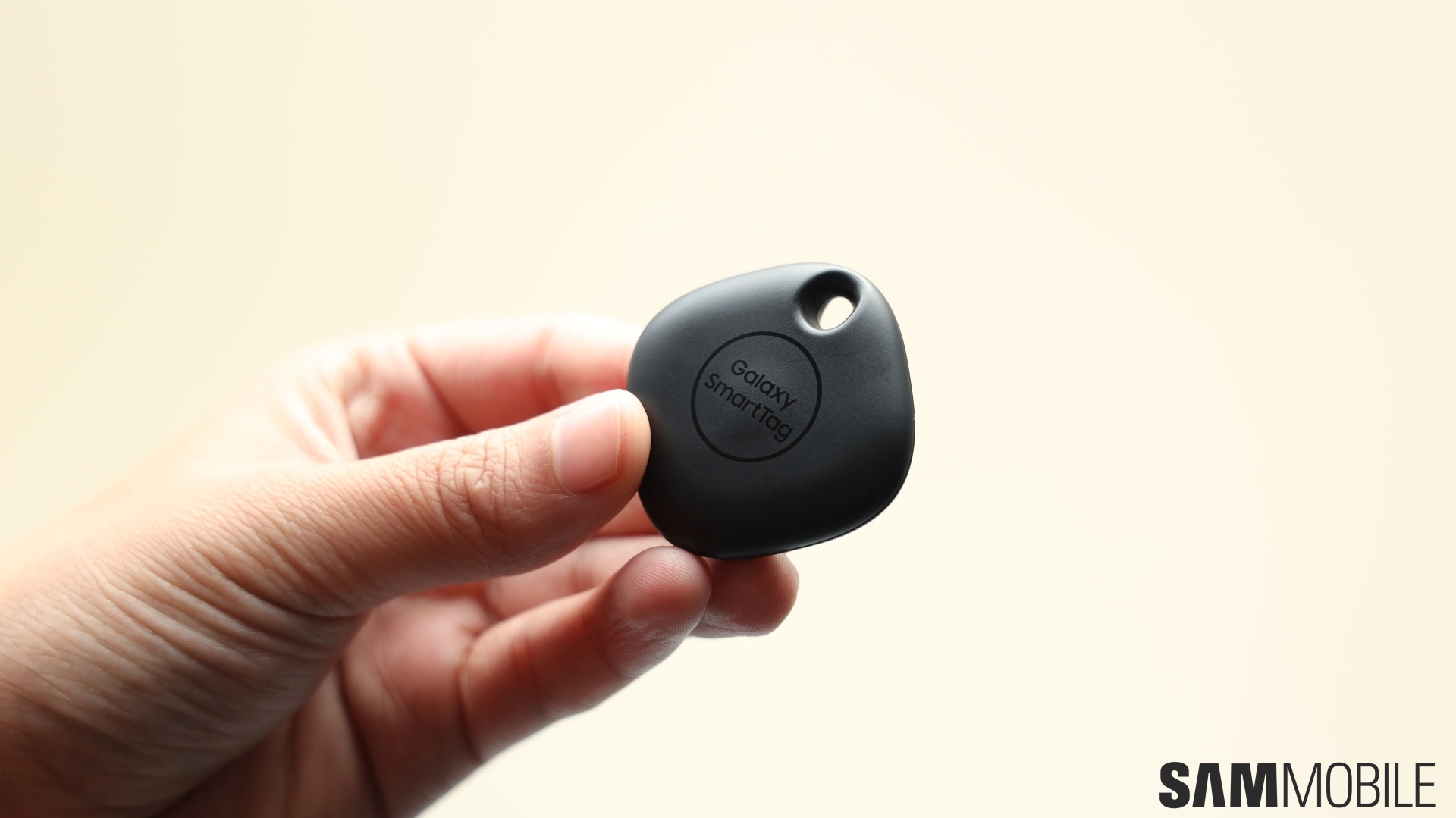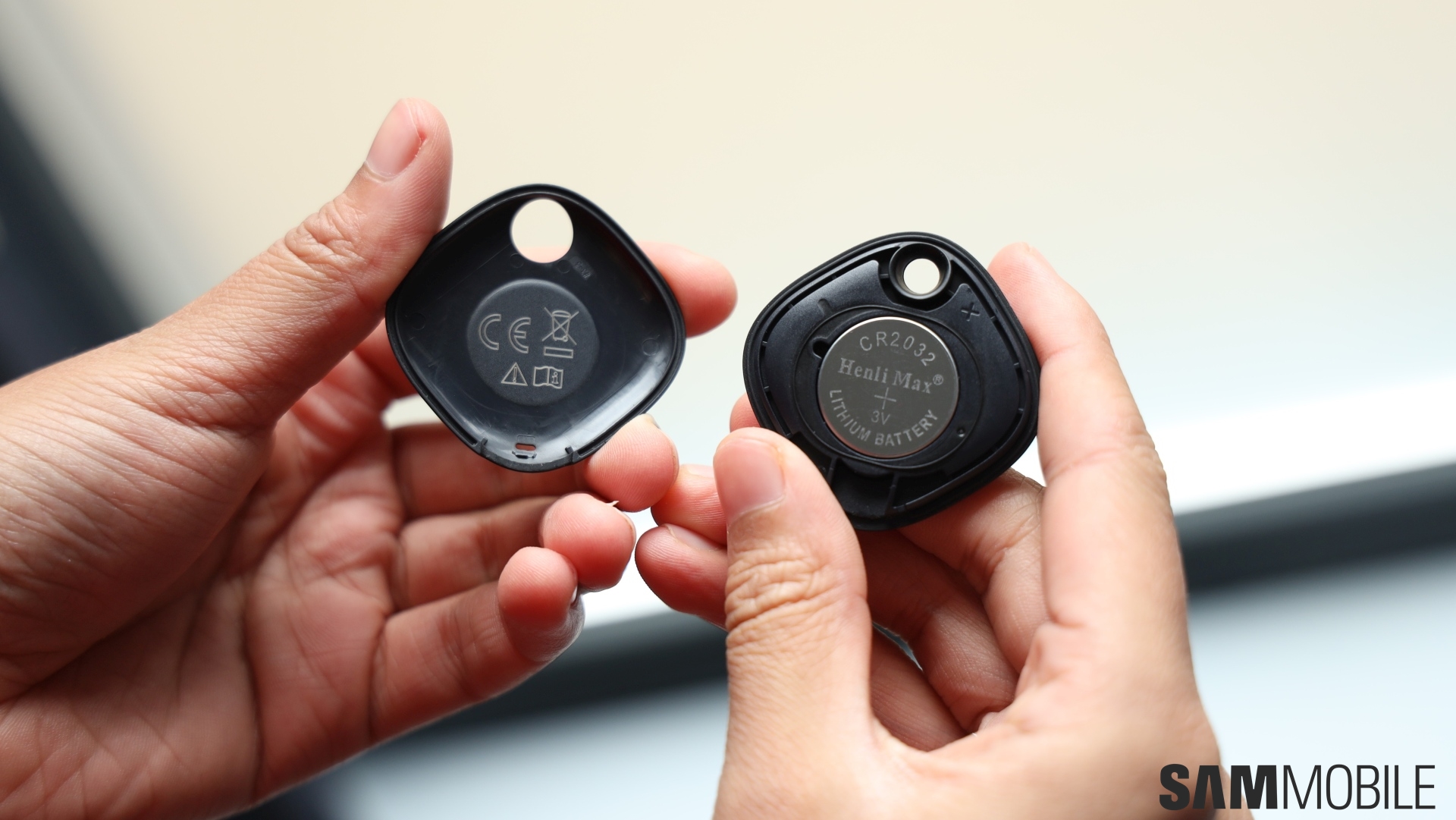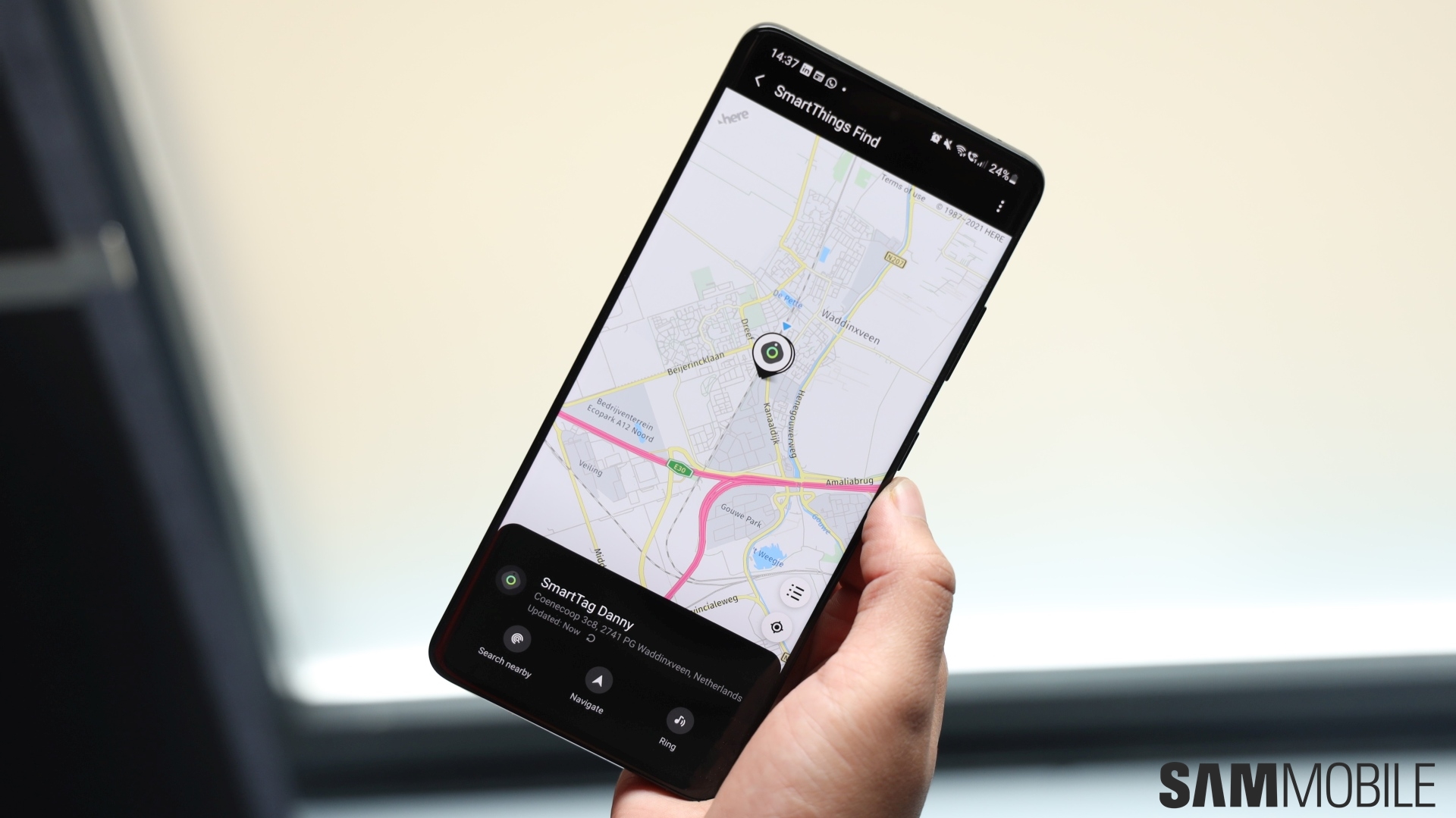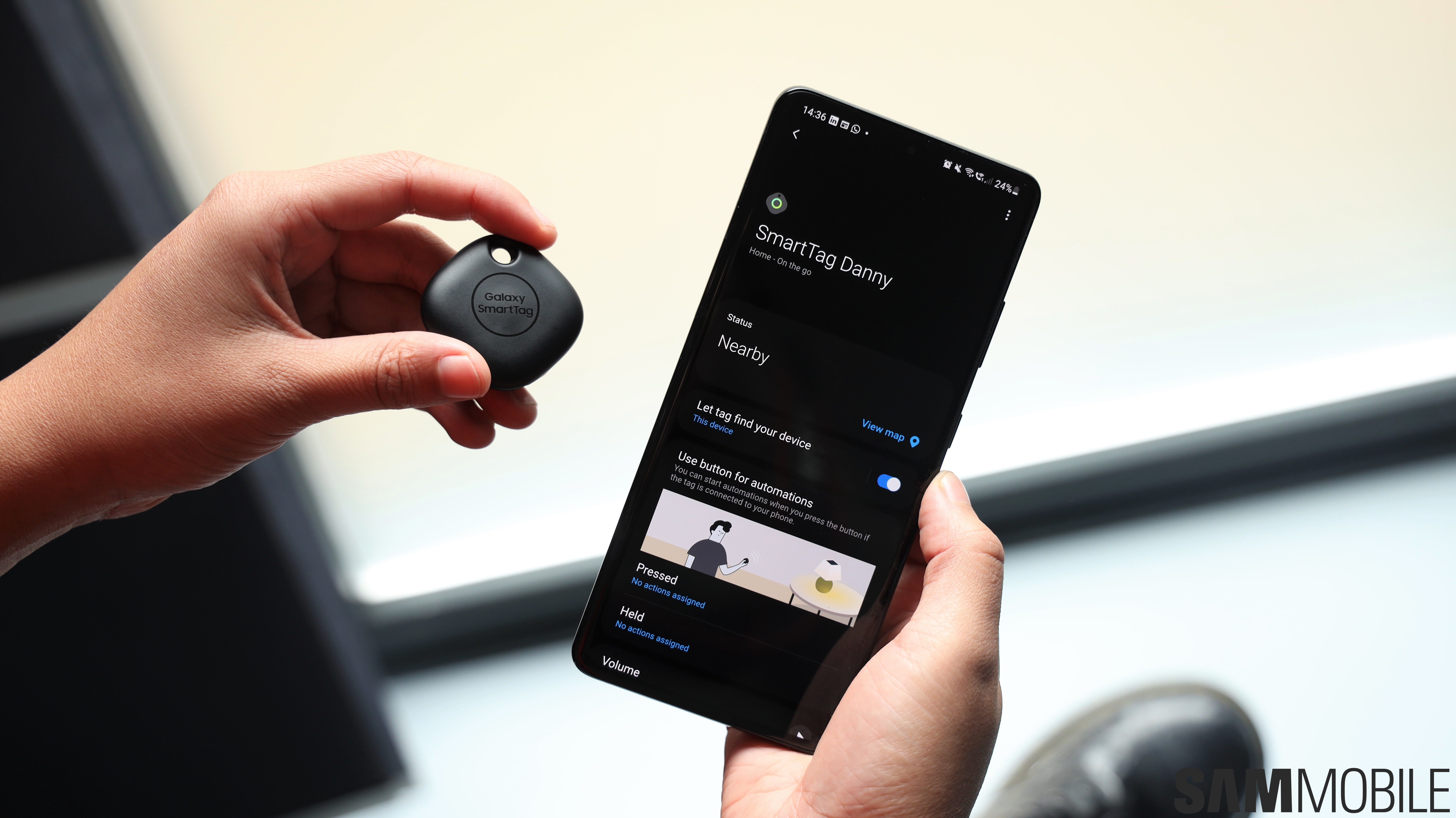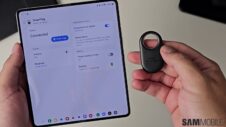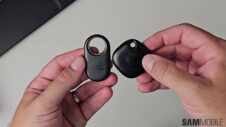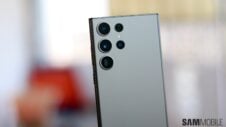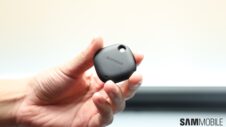Samsung's latest accessory is the company's own take on a Bluetooth-powered tracker. It hasn't broken any new ground with the Galaxy SmartTag. This isn't the first tracker of its kind but Samsung has made one now to further expand its ecosystem of connected devices.
In this Samsung Galaxy SmartTag Review, we look at the features of this Bluetooth tracker and see if it's as capable as the company makes it out to be.
Design
No bigger than a hockey puck, the Galaxy SmartTag is made out of material that's soft to the touch. There's a key ring up top which makes it possible to easily attach the tracker to a backpack, for example.
While easily pocketable, the 0.39-inch thick SmartTag won't really fit inside your wallet easily. That's because it's slightly bulging in the middle. It does have an IP53 rating for water resistance which means it can keep up with your outdoorsy lifestyle. The SmartTag can easily be snapped open to replace the CR2032 battery.
Performance
At the end of the day, it's a very straightforward product with one main goal: to help you find things that you've misplaced. The Galaxy SmartTag is very good at doing that. It does have one limitation, though. It's only compatible with Samsung smartphones. Unlike popular Bluetooth trackers like Tile, the Galaxy SmartTag can't be used with any other Android phone let alone an iPhone.
It's clear as day that Samsung's tracker is an accessory only for those who use its smartphones. You'll need to buy a Galaxy device if you ever want to use just the SmartTag or find it for a dirt cheap price at the bargain bin of your local electronics shop.
The setup process is quite easy. Add it as a new device through the SmartThings app and the SmartTag will be automatically detected. So how do you go about locating the items you've lost? Simply make the tracker ring through the app. If you've misplaced your phone but have the SmartTag on hand, you can make the smartphone ring through it as well by tapping the SmartTag's button twice.
Since the entire reason this product exists is to let out a piercing tone so that misplaced items can be located, Samsung offers 10 tones to choose from which can go as high as 89dB. The SmartTag is noticeably louder than the Tile Mate so as long as you're within earshot, you'll easily be able to find the tracker.
When you're in Bluetooth range, you can utilize the signal strength meter to locate your misplaced item even if you can't hear the tone. The meter's strength increases as you get closer to the tracker but it can be a bit hit or miss at times.
Once outside the distance of approximately 60 feet in which the phone stays connected to the tracker over Bluetooth, the SmartThings app shows a five minute timer during which it continues to search for it.
Features
The SmartThings app can show the last location of the tracker on a map where it was last connected to a smartphone. There's no real-time tracking so it won't be the like the movies where you can see the blue dot moving with extreme precision.
Samsung is leveraging its vast galaxy of smartphone users to make it easier to find your lost tracker. SmartTag emits a Bluetooth Low Energy signal that other Galaxy devices with the SmartThings app nearby can detect.
So if you forgot your backpack with the tracker attached on the park bench, its location will update on your own app in SmartThings even when someone else passes by it. Samsung says that all SmartThings Find user data is encrypted and protected securely.
Another useful feature that the SmartTag has which many other trackers don't is its ability to act as a remote control for the Internet of Things routines. The button on the SmartTag has a single-press programmable function that can be linked to trigger many different IoT and home automation devices like smart lights and thermostats. Its ability to function as a small IoT remote really makes the SmartTag worth its price tag.
Conclusion
The Galaxy SmartTag has a lot of things going for it. It looks good, has a replaceable battery, can function as an IoT remote and is very loud. The range isn't as great as the competitors from Tile and there's also a much smaller network of existing users. However, this is only the first generation of the SmartTag, so we will surely see an improvement down the line.
Samsung actually has a more advanced version of the tracker called the Galaxy SmartTag+. It's going to be launched later this year. The SmartTag+ will have support for Ultra Wideband technology and will thus support UWB positioning. When used with a compatible device like the Galaxy S21 Ultra (read our review) or Galaxy Note 20 Ultra, it will be able to show you on the map exactly what direction the SmartTag+ is in.
Both suffer from the same restriction, though. The SmartTag can only be used with Samsung devices. So the $29.99 SmartTag, that has also been liberally handed out as a pre-order incentive with the Galaxy S21 series, only makes sense for those who are truly committed to the Samsung ecosystem. If you tend to switch between different device manufacturers every year, a tracker that doesn't lock you into an ecosystem will make more sense.
